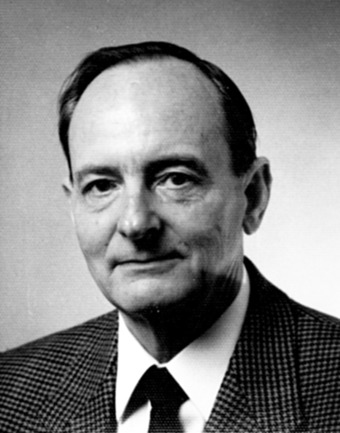Orbituary for Professor Lothar Köster
2015-09-10 – News from the physics department

Lothar Köster was born on 19 October 1922 in Essen and studied physics in Heidelberg. In 1953 he completed his PhD in the field of nuclear physics, supervised by Heinz Maier-Leibnitz and Walter Bothe. After that for a short time he became department director of the isotope laboratory at the former paint factory Bayer. His dissertation has left a lasting impression, because Maier-Leibnitz, who was Scientific Director of the FRM at that time, asked him in 1958 to come to Garching. Under Köster’s direction an effective operational and organizational structure arose at the FRM, which on the one hand satisfied the high safety requirements and on the other hand granted as many of the wishes of the researchers for scientific freedom as possible. Since the FRM was the first nuclear facility in Germany, there was no role model, on which he could build on. Instead, the operation and scientific use under his guidance became a model for other research reactors that were built shortly thereafter. In the 1980s the converter facility was built at FRM under his management, which mainly served the radiation of tumors near to the surface with fast neutrons. 1987 Köster was awarded the German Cross of Merit, First class.
Lothar Köster was a physicist by passion: For example, he built the first gravity refractometer, which allowed the world’s most accurate determination of the interaction between neutrons and protons, deuterons and electrons and earned him international recognition. His precision measurements of coherent scattering lengths and total cross-sections for monoenergetic epithermal neutrons served as baseline data for all scattering experiments and for testing theories of the statistical distribution of resonances. Early after the war, his international contacts led to the first scientific exchange with the former Soviet Union.
Besides his work as director of the FRM, for whom the staff always had top priority, as an associate professor at the Physics Department of the Technical University of Munich he greatly served in education, was author of several books and supervised more than 80 PhD students. He was always interested and captivated by physics – even long after his retirement, he stayed in close contact to the FRM II and the physics department; therefore the scientific colloquium, to which the Physics Department has invited in his honor on the occasion of his 80th birthday, was a really great joy for him.